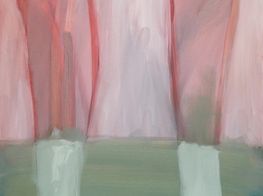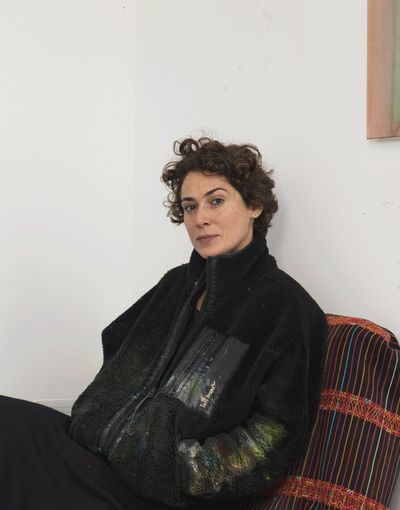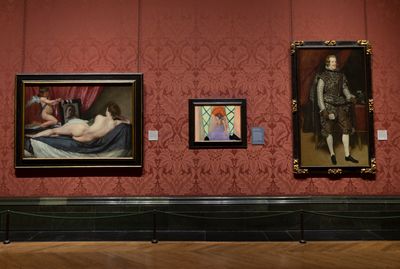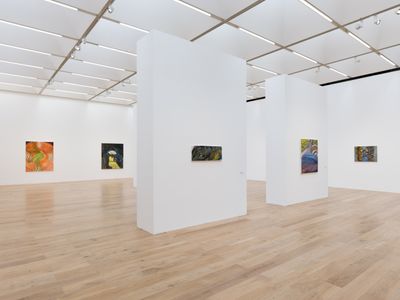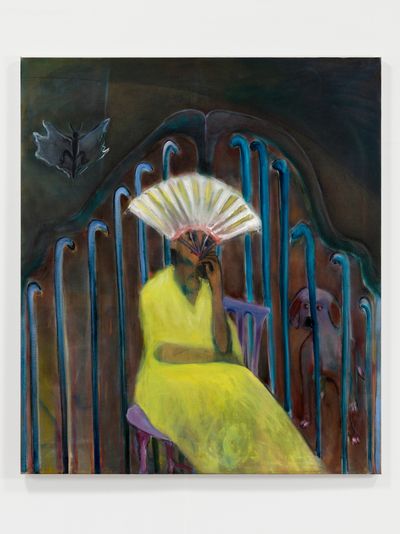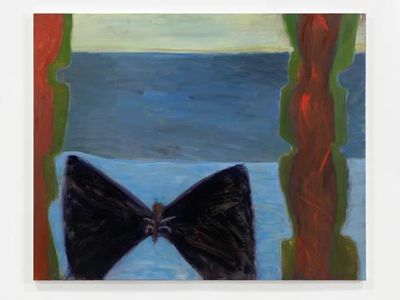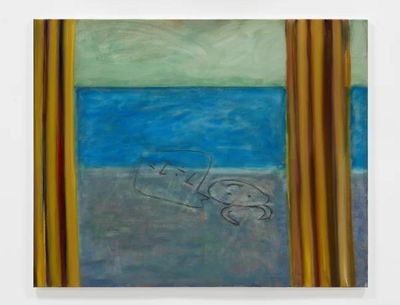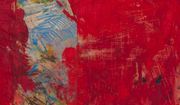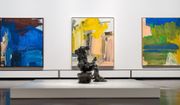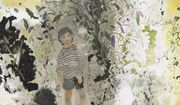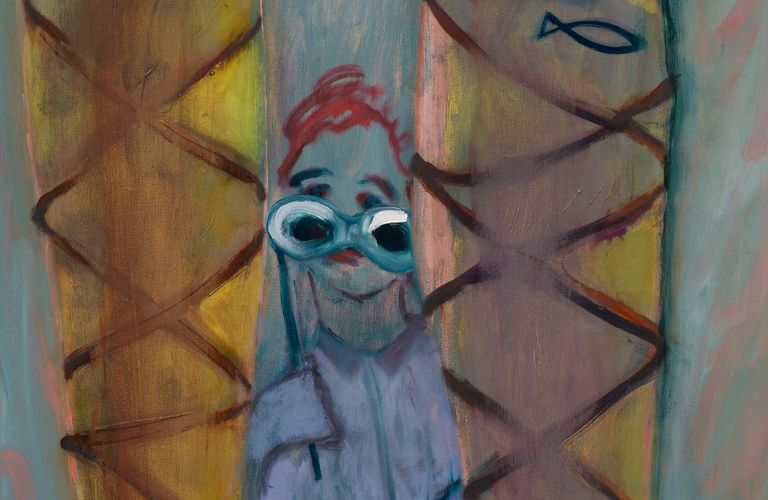
Rosalind Nashashibi Goes Through the Legs and Between the Shutters at Nottingham Contemporary
Nominated for the Turner Prize as a filmmaker in 2017, Rosalind Nashashibi went on to paint her way into being the first artist-in-residence at The National Gallery, London, in 2020.
The year-long residency saw the London-based artist develop a new body of work that responded to (and was subsequently hung amongst) the paintings of 17th-century Spanish masters housed in the London institution.
Having only returned to painting in the past few years, Nottingham Contemporary is host to her largest exhibition to date, Hooks (11 February–7 May 2023), which features her latest body of works.
On the occasion of the exhibition, Rosalind speaks with Ocula Director Rory Mitchell to discuss the focus of her Nottingham show and her experience at The National Gallery.
Although you studied painting for your MFA at Sheffield Hallam University, at the start of your career you were best known for your films. Have you always made paintings alongside these films? And how has working with moving image affected your practice as a painter?
I fell in love with films during my painting degree at Sheffield. There was a huge archive of VHS tapes in the library and I watched the work of the French and American new wave, Neo-realists, and other auteur directors from the sixties and seventies and earlier, I was inspired by Chantal Akerman, Agnes Varda, Pasolini, Erroll Morris, Fassbinder, and many others.
While a very direct observational filmmaking took precedence over other things, I was always making collage, prints and two-dimensional works alongside film as I wanted to see light spaces in my exhibitions.
However, in the last eight or nine years I've come back to a daily practice of painting with a completely different intensity. Working as a filmmaker I learnt how to channel a situation, and investigate a hunch, through film. I approach painting that way too, as a kind of self-permitting and self-trusting practice
In 2020, you were the first artist in residence at The National Gallery, London. That must have been quite an experience. Could you tell us a little about this?
It was a learning experience for me, I learnt a lot about the collection and came to value it as a part of my artistic heritage. As an artist, I connected my story, and that of my contemporaries, with artists from the deeper past.
At The National Gallery there are many great works, but there is also the knowledge and the deep admiration and care of all the curatorial and scientific staff there, who can open up this work for everyone else.
The experience allowed me to talk to the curators, and learn stories about the artists and how they felt about one another: their jealousies and joys and how they felt about their reception. It was pretty much how we feel today, the context was different but the problems were the same.
You were able to hang your works in any one of the galleries there, to which you chose the Spanish room—where Velázquez, Ribera and Esteban Murillo hang. What led you to this choice?
I kept returning to visit that room during my residency. At one point I walked into the room and said to myself, 'An overflow of passion and sentiment', and that's what I ended up calling my display.
I was interested in the line between what is genuine passion, in the religious feeling, and in the love and the purity of painting there, and what is sentimental, less genuine and more pushed towards the false and overly sweetened.
That borderline, like many borders, fascinates me. I'd like to make a sentimental painting that has genuine passion, to make what should be kitsch natural and unique and new. To paint what is embarrassing if only because it's not quite classifiable, because our embarrassment is evidence that we have a lot at stake.
My paintings were made in conversation with the paintings of Spanish masters Zurbarán, Murillo and Velasquez. On the one hand I was over-awed by having to put my paintings alongside these masters, but on the other I found the experience a lot of fun—it was quite an irreverent and punk thing to do.
Your recent paintings combine the everyday—capturing your observations, with more fantastical narratives. Is there a particular moment or experience that has been the catalyst for this group of works in Nottingham?
The paintings for my Nottingham show, HOOKS started from the idea of looking through using a filter; a fan, shutters, a pair of legs, opera glasses. I wanted to see two objects together and capture this simultaneous recognition.
One of the paintings is called Joyous recognition, a smile rises up from the deep (2023) and its title is a clue to how I work. I am fascinated by the idea of recognition, particularly the moment when it occurs. You can recognise something you have never seen before—that's the mystery.
Perhaps that's why people use the term dreamlike or dreamy. It doesn't really mean anything, but in a dream you can even recognise things that don't make sense because they show you what you know not only on a conscious level, but a deeper level. Call it collective memory or the unconscious—it's about making connections.
You have said that your paintings and films access an 'internal world that a documentary approach can't reach'. Could you expand on this?
I would say my paintings and films both access more than what documentary approach can reach.
For me, it's the mix of reality and observation, with an attempt to represent something intangible, that makes paintings and film more real, or that relates it to a real experience rather than reportage.
It's about trying to record something on several layers of perception, not just those that are obviously communicable to others. That is the goal.
A lot of the paintings from this show have a dreamlike quality and I am conscious of your Palestinian heritage. You have spoken about being unable to encounter the more spiritual elements associated with the culture in relation to your family and its history.
Much like your Turner-nominated films—Electrical Gaza (2016) and the film with Vivian Suter, Vivian's Garden (2017)—everyday scenes become spiritual in some way. Do you recognise this as being connected to your heritage and identity?
My relation to most situations is as a bit of an outsider. It's not deliberate, it's just always been the case.
My Palestinian identity was always there, but wasn't something that was really discussed. While we would take trips to Palestine to visit relatives in the diaspora, questions about our background and culture weren't at all encouraged. It wasn't a happy or easy conversation and there was a lot we didn't know as kids, and too many pitfalls we could fall into.
However, it made my childhood different from the rest of the community I grew up in. My mother is from Belfast, Northern Ireland, and so she grew up in a very different culture. What I got from both my parents' backgrounds was conflict, and a desire they both had for something different that could be found elsewhere.
I didn't grow up with either Islam or Christianity, but rather with a point of view that didn't really know where it was coming from and that was useful in its own way. —[O]
Main image: Rosalind Nashashibi, Malvolio (2020–2022). Oil on linen. Courtesy the artist and GRIMM, Amsterdam/New York/London.

